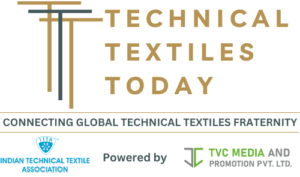The UK-based Fibre Extrusion Technologies (FET) has introduced a more sustainable, cost-effective, and highly flexible process for manufacturing fibers made from ultra-high molecular weight polyethylene (UHMWPE).
Exceptional Fiber Properties
UHMWPE continues to be highly valued across industries for its remarkable characteristics. It is ten times stronger than steel by weight, has excellent abrasion resistance, low friction, and high impact strength. The fibers are chemically inert, resist UV light, and do not absorb moisture, performing well in a broad temperature range while remaining extremely lightweight.
These properties make UHMWPE ideal for marine ropes, rescue equipment, ballistic armor, cut-resistant apparel, sports gear, and increasingly for medical implants.
Focus on Biomedical Market
“FET has delivered numerous extrusion systems for the biomedical sector, especially for producing both resorbable and non-absorbable sutures,” said Richard Slack, FET’s Managing Director.
He added that there’s a demand for small-batch UHMWPE fibers in custom sizes, which current large-scale production systems cannot accommodate.
“The conventional systems are massive and complex, leaving little room for innovation or custom orders,” added Jonny Hunter, R&D Manager. FET addressed these limitations by creating the FET-500 lab and small-scale gel spinning system, specifically for flexibility and experimentation.
Supercritical CO₂ Innovation
A standout feature of FET’s new approach is a patented batch solvent extraction process using supercritical carbon dioxide (CO₂).
Traditionally, the UHMWPE gel spinning method required toxic solvents like dichloromethane (DCM) or hexane for extracting oil from the polymer gel. This process is highly hazardous, resource-intensive, and environmentally damaging, consuming 10 kg of hexane to extract 1 kg of oil.
“Using traditional solvent extraction isn’t feasible at our lab scale due to long solvent baths and heavy chemical handling,” noted Kris Kortsen, Senior Material and Process Scientist. “CO₂ offers a safer, non-toxic, and residue-free alternative that dramatically reduces environmental impact.”
Closed-Loop and Modular Design
A highly modular drawing system based on heated godet rollers enables flexible temperature and drawing control for new product development.
FET’s system uses a closed-loop design that recovers over 95% of the solvent without compromising fiber quality. This leads to clean, high-strength filament yarns produced more safely and efficiently.
A further enhancement is the modular drawing unit, which uses heated godet rollers to provide precise control over temperature and tension, allowing for custom product development and future scalability.
A detailed life cycle analysis (LCA) is underway to quantify environmental benefits and will be shared soon.
“With over 130 polymers processed in our system development, the FET-500 truly is a game changer,” concluded Richard Slack. “There’s a clear market need for smaller batches of UHMWPE, and we’re ready to demonstrate our system at our Fibre Development Centre in Leeds.”
